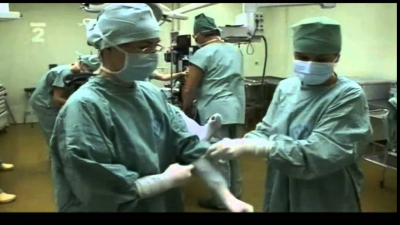What is a teratoma?
Teratoma is a tumor of embryonic origin formed by several cell types. They usually appear in the ovaries of the woman, although it is also possible to find them in males or children in the testicles or diverse locations.
The teratoma is formed by tissues or components of organs that come from the 3 germinal layers of the embryo, which are the endoderm, the mesoderm and the ectoderm. For this reason, it is possible that the teratoma contains several types of tissues, such as hair, teeth, bones, cartilage, etc., giving a "monster" aspect to this type of tumor.
Below you have an index with all the points that we will discuss in this article.
Index- 1. Definition
- 2. Types
- 2.1. Mature or benign teratoma
- 2.2. Immature or malignant teratoma
- 3. Causes and symptoms
- 4. Diagnosis
- 5. Treatment
- 6. Complications
- 7. Questions from users
- 7.1. Can an ovarian teratoma be malignant?
- 7.2. What is a fetiform teratoma?
- 7.3. Is it possible to find a teratoma with eyes?
- 8. Recommended reading
- 9. Authors and collaborators
Types
As we said in the previous section, there are two main types of teratomas:

Mature or benign teratoma
It usually occurs in women of childbearing age and is also known as a dermoid cyst. It represents 10-20% of the cases of neoplasia in the ovary.
These tumors are slow growing. Its average size is between 5 and 15 cm, although they can reach 45 cm.
Mature teratoma is the ovarian tumor that can cause the most problems during pregnancy.
Normally, they are unilateral and dominate in the right ovary, although in 15% of cases it can occur bilaterally in both ovaries. It is also possible to find more than one cyst in the same ovary.
Other more rare locations of mature teratomas in adults are the following: skull, mediastinum, retroperitoneum, mesentery, and sacrococcygeal region.
Locations of mature teratomas


Comments
Post a Comment